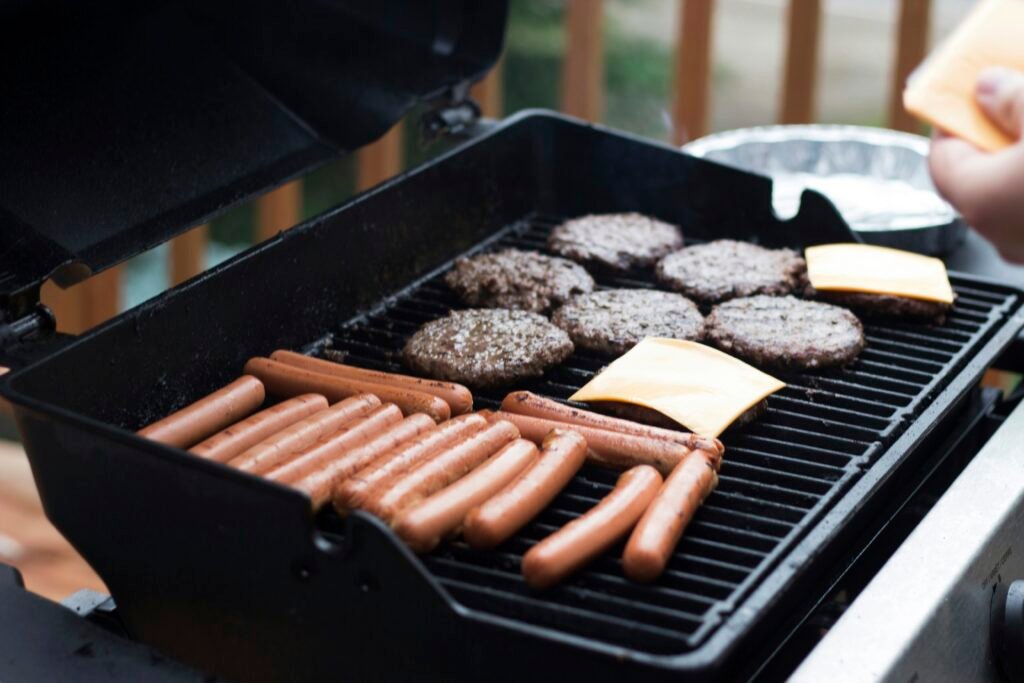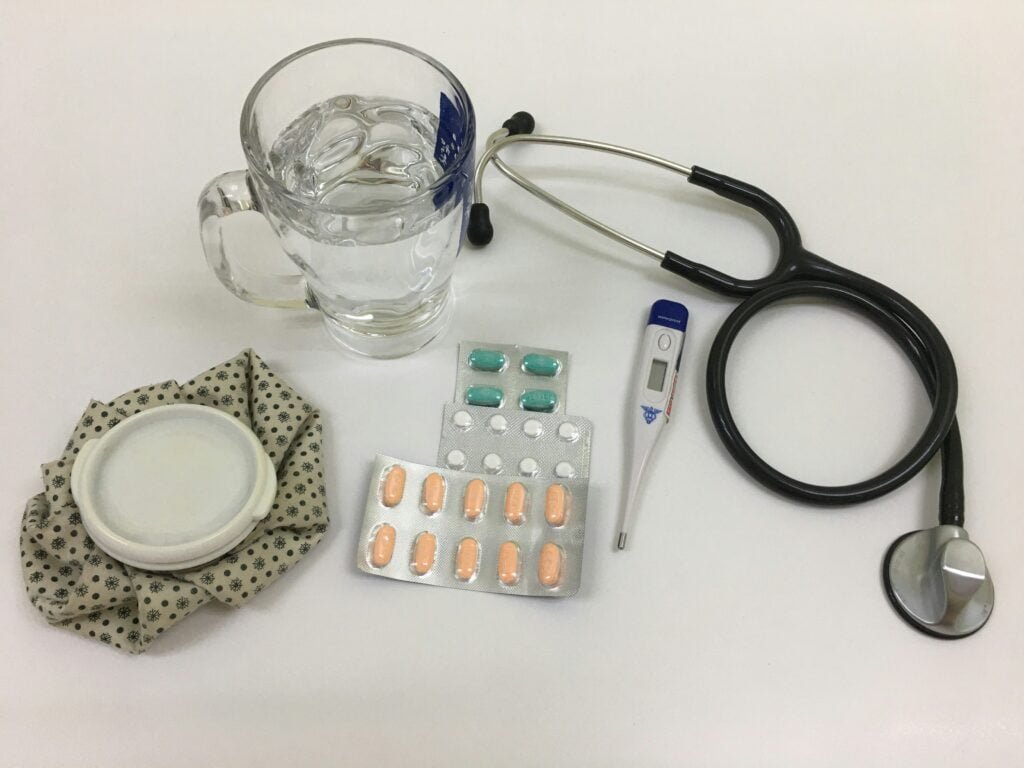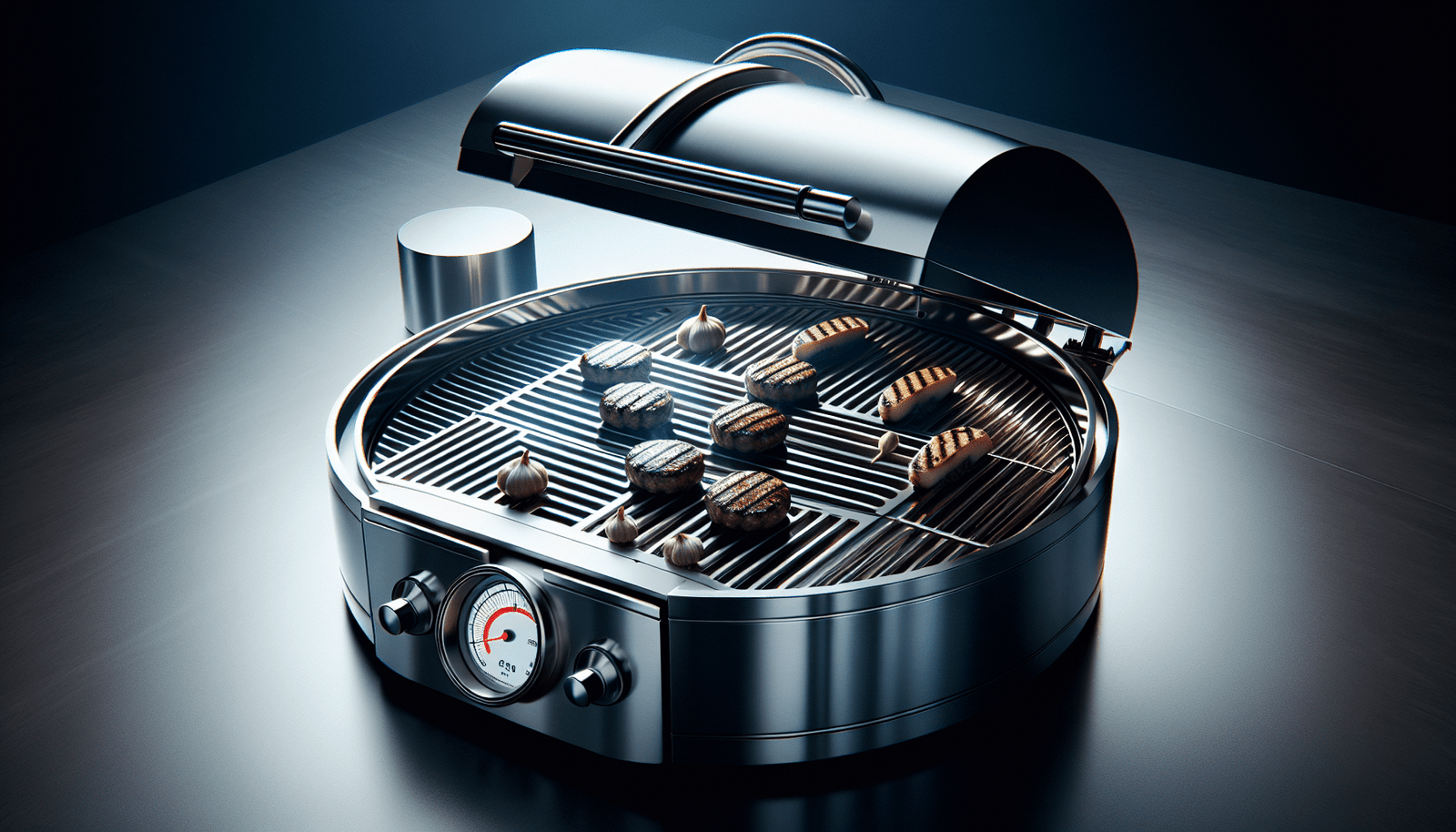In the world of outdoor cooking, having a grill with a temperature gauge can truly elevate your grilling game. A temperature gauge is a handy tool that helps you monitor and control the heat inside your grill, ensuring your food cooks perfectly every time. By understanding how a temperature gauge works, you can achieve more consistent and delicious results. This article will go over the working mechanism of a temperature gauge, explain how it interacts with your grill, and show you how to make the most of this convenient feature to become a backyard barbecue master. Have you ever wondered how a grill with a temperature gauge works? It might seem like a straightforward question, but the answer is both fascinating and essential for anyone who loves cooking outdoors. Understanding how your grill maintains the perfect temperature can significantly improve your grilling experience.

Introduction to Grills and Temperature Gauges
Grilling is an age-old cooking method that brings out unique flavors in food. Whether you’re a grilling novice or a seasoned pro, maintaining the right temperature is crucial for perfect results. A grill with a temperature gauge can be a game-changer, allowing you to monitor and adjust the heat easily. But how exactly does this feature work?
Importance of Temperature Control in Grilling
Temperature control is vital in grilling as it ensures even cooking, prevents burnt food, and preserves the juiciness and flavors of your ingredients. Different foods require different temperature settings, and an accurate gauge helps you hit the sweet spot every time.
Basic Components of a Grill with a Temperature Gauge
First, let’s break down the primary components involved when we talk about a grill with a temperature gauge. Understanding these components will help you get a clearer picture of how they work together.
The Grill Body
The grill body is the main structure that holds everything together. It includes the cooking grates, where you place your food, and the firebox, where the fuel burns. It also houses the temperature gauge, making it a crucial component for maintaining the desired temperature.
Temperature Gauge
The temperature gauge, often located on the lid of the grill, measures the internal temperature. It typically displays the temperature in degrees Fahrenheit or Celsius, allowing you to monitor how hot your grill is at any given moment.
Fuel Source
The fuel source could be charcoal, propane, natural gas, or even electricity, depending on the type of grill you have. Each fuel source has its own way of affecting grill temperatures, which we’ll delve into later.
Vents and Dampers
These are pivotal for airflow control. By adjusting vents and dampers, you can regulate the oxygen flow to the fire, directly impacting the grill’s temperature.
How Does a Grill Temperature Gauge Work?
Now, let’s dive deeper into how these components come together, focusing specifically on the role and functioning of the temperature gauge.
Types of Temperature Gauges
Temperature gauges can be broadly classified into two types: analog and digital. Both types have the same fundamental purpose but operate differently.
Analog Temperature Gauge
An analog temperature gauge uses a bi-metallic strip that reacts to temperature changes. Here’s how it works:
- Bi-metallic Strip: Consists of two different metals bonded together that expand at different rates when exposed to heat.
- Temperature Change: As the temperature rises, the metals expand, causing the strip to bend.
- Needle Movement: This bending action moves the needle on the gauge, indicating the temperature.
Digital Temperature Gauge
A digital temperature gauge uses electronic sensors to measure the temperature. Here’s how this type of gauge functions:
- Electronic Sensor: A sensor such as a thermocouple or thermistor measures the temperature electronically.
- Microprocessor: The sensor sends the temperature data to a microprocessor.
- Digital Display: The microprocessor converts this data into a numeric value displayed on a screen.
Installing and Reading the Temperature Gauge
Proper installation and correct reading of the temperature gauge are essential for accurate temperature measurements.
Installing the Temperature Gauge
Most grills come with a pre-installed temperature gauge. However, if you need to install one yourself, make sure it’s securely mounted through a hole in the grill’s lid or body.
Reading the Temperature Gauge
When you look at the temperature gauge:
- Placement: Ensure the gauge is readable without having to open the grill, which can cause heat loss.
- Stabilize: Wait until the grill temperature stabilizes, usually around 5-10 minutes after adjusting the vents or dampers.
- Check: Note the reading and make necessary adjustments.
Calibration: Ensuring Accuracy
To maintain accuracy, it’s important to calibrate your temperature gauge periodically. Here’s a simple method:
- Boiling Water Test: Immerse the gauge in boiling water. The temperature should read 212°F (100°C), considering altitude adjustments.
- Ice Water Test: Place the gauge in ice water. It should read 32°F (0°C).
If your gauge is off, refer to the manufacturer’s instructions for calibration.
Controlling Grill Temperature
Apart from the temperature gauge, several factors influence grill temperature. Let’s explore these aspects to better control your grilling environment.
Understanding Heat Zones
Grills have heat zones that can be either direct or indirect. Recognizing and using these zones effectively can enhance your cooking results.
| Heat Zone | Best Used For |
|---|---|
| Direct Heat | Grilling steaks, burgers, or thin-cut meats quickly over high heat. |
| Indirect Heat | Cooking larger cuts of meat, smoking, or slow-roasting. |
Managing Airflow
Airflow is a critical factor in temperature control. Adjusting the vents and dampers allows you to control how much oxygen reaches the fire, directly influencing the heat.
Vents and Dampers Usage
- Opening Vents: More oxygen increases the temperature.
- Closing Vents: Less oxygen lowers the temperature.
Adjusting vents can help maintain a consistent temperature by either accelerating or slowing down the combustion process.
Choosing the Right Fuel
The type of fuel you use also affects how your grill heats up and maintains temperature.
| Fuel Type | Characteristics |
|---|---|
| Charcoal | Provides intense heat and smokes flavor, but requires more monitoring and airflow adjustments. |
| Propane/Natural Gas | Easier to control and adjust temperatures quickly. |
| Electric | Convenient, but may not reach as high temperatures as charcoal or gas. |
Using a Multi-Zone Setup
Creating multiple heat zones within your grill allows you to cook different foods simultaneously. Here’s how you can set up zones:
- High Heat Zone: Pile more charcoal or turn up the burners on one side.
- Medium Heat Zone: Spread a single layer of coals or turn down the burners in the middle.
- Low Heat Zone: Place fewer coals or use minimal burners on the opposite side.
Best Practices for Grilling with a Temperature Gauge
To get the most out of your grill with a temperature gauge, consider these best practices:
- Preheat Your Grill: Always preheat your grill to your desired temperature before placing food on the grates.
- Keep the Lid Closed: Opening the lid frequently causes temperature fluctuations, making it harder to maintain a constant temperature.
- Use a Meat Thermometer: For precise cooking, supplement your grill’s temperature gauge with a meat thermometer.
- Clean and Maintain Your Grill: Regular maintenance ensures accurate readings and efficient operation of your grill.

Troubleshooting Common Issues
Even with a temperature gauge, you might encounter some common issues while grilling. Let’s address these and find solutions.
Inaccurate Temperature Readings
If your temperature gauge is giving inaccurate readings:
- Check for Obstructions: Ensure there’s no buildup of grease or debris affecting the gauge.
- Re-calibrate: Use the boiling water and ice water tests to calibrate the gauge.
- Replace When Necessary: Sometimes the gauge might be faulty and needs replacement.
Uneven Heat Distribution
Uneven heat can cause inconsistent cooking results. To remedy this:
- Redistribute Coals: If using charcoal, ensure an even distribution of coals.
- Adjust Burners: For gas grills, check the alignment and functioning of burners.
- Rotate Food: Move your food around to ensure even cooking.
Difficulty in Maintaining Temperature
If maintaining a consistent temperature is challenging:
- Check Fuel: Ensure you have enough fuel and it’s burning efficiently.
- Adjust Airflow: Tweak the vents and dampers for better control.
- Control Lid Usage: Avoid frequent opening of the grill lid.
Understanding Advanced Features
Modern grills come with advanced features that offer enhanced control and convenience. Here are a few to consider:
WiFi-Enabled Temperature Gauges
WiFi-enabled gauges connect to your smartphone, allowing you to monitor and control grill temperature remotely. These devices often come with companion apps that provide alerts and track cooking progress.
Multi-Sensor Systems
These systems come with multiple probes that can measure the temperature at different points inside the grill and even inside the food. This provides a more comprehensive overview and helps in achieving optimal cooking results.
Smart Grills
Smart grills come with integrated temperature sensors, automated controls, and apps that suggest cooking times based on the type of food you’re grilling. These are perfect for those who want to enjoy grilling with minimal effort.

Conclusion
Understanding how a grill with a temperature gauge works can elevate your grilling game. From the basic components like the grill body and temperature gauge to advanced features like WiFi-enabled sensors, knowing how to use and maintain these elements allows you to achieve better cooking results.
By mastering temperature control through proper use of airflow, fuel types, and multi-zone setups, you can ensure that your grilled foods are cooked to perfection each time. Remember, a well-calibrated, accurately read temperature gauge is your best friend in grilling.
So, next time you fire up your grill, you’ll know exactly how to use that temperature gauge to make the most out of your outdoor cooking experience. Happy grilling!

